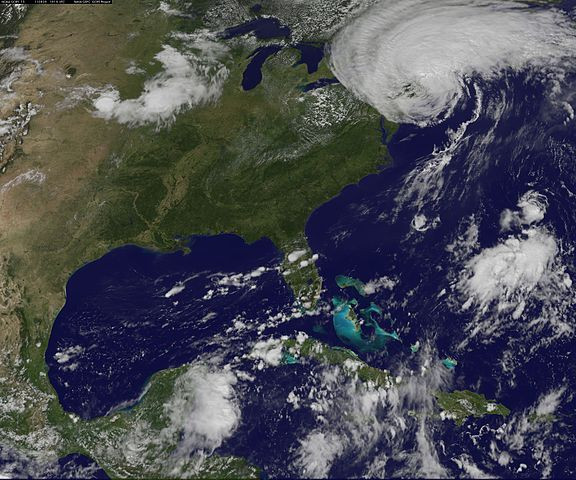A 'Broken Heart' Follows Major Natural Disaster For Many People Worldwide

A broken heart is painful to witness and even worse to experience. Typically, we think of this kind of pain — the result of lost love or some other horrifying disappointment — as more in the head than the actual heart. But there is a real broken heart syndrome known as "Takotsubo cardiomyopathy." which is a temporary disruption of the heart's normal pumping function. Now, researchers presenting their work at the American College of Cardiology's 63rd Annual Scientific Session say they have found dramatic spikes in cases of broken heart syndrome after two major natural disasters.
"It's a perfect example of our brain-heart connection," said Dr. Sadip Pant, internist at the University of Arkansas Medical Sciences, and lead investigator of the study. "The emotional stress we have in our brain can lead to responses in the heart, and not much is known about this condition."
Heart Syndrome
Takotsubo cardiomyopathy causes temporary enlargement and weakening of the heart muscle. It is often triggered by extreme stress, such as being in a car accident or losing a child or spouse. Though international studies have linked broken heart syndrome to natural disasters, including the 2004 Japanese earthquake, American scientists have never examined how the condition relates to such catastrophes… until now.
In 2011 using a nationwide hospital discharge database, researchers at the University of Arkansas identified 21,748 patients diagnosed with broken heart syndrome. After mapping the cases by state, they discovered that most states had fewer than 150 cases per million residents, with New Hampshire and Hawaii showing the lowest rates of all.
However, Vermont and Missouri clocked the highest rates of broken heart syndrome, with 380 cases per million residents in Vermont and 169 per million in Missouri. In fact, the rate of broken hearts in Vermont in 2011 was more than double most other states. This was the same year that Tropical Storm Irene pummeled the state with heavy rain and wind, causing the most devastation Vermont has experienced since the Great Flood of 1927. Similarly, researchers found broken heart syndrome at a rate of 169 cases per million in Missouri in 2011, the same year a massive tornado stormed through Joplin and demolished neighborhoods while leaving at least 158 people dead in its wake.
Symptoms of Broken Heart Syndrome
The inspiration for the study was the increasing number of broken heart syndrome cases. Takotsubo cardiomyopathy got its name because the abnormal shape of the heart resembles a Japanese octopus fishing pot (the word literally means octopus pot). Patients often believe they are undergoing a heart attack, with chest pain and shortness of breath. Unfortunately, this confuses doctors and delays diagnosis, especially in light of the fact that blood tests and electrocardiograms also look suspiciously like a heart attack. In the acute scenario, Takotsubo cardiomyopathy can result in serious complications such as heart failure, life-threatening arrhythmias and stroke; one in four patients have arrhythmia and up to seven percent suffer cardiac arrest. The good news is that more usually, broken heart syndrome ends by itself within a month or two.
"By and large, it is a very reversible form of cardiomyopathy, but in the acute phase these patients need to be monitored closely to be sure they are stable and to prevent and manage problems," Pant said in a press release.
What is the cause of broken heart syndrome? Doctors believe that episodes are driven by surges of adrenaline in the body, similar to a fight-or-flight reaction. With everyone's threshold for stress being different, and with more natural disasters occurring more frequently in some parts of the country, some residents may experience less stress during a particular disaster. In places like Vermont, natural disasters are relatively rare so people there may be more susceptible to extreme stress when a disaster hits.
Growing numbers for broken heart syndrome may be due to greater awareness, especially since a new reimbursement billing code was established for it in 2006. Pant says, regardless, it is important that emergency room physicians and first responders are knowledgeable and able to identify potential triggers.



























